The strwb journey: from seed to fruit

From tiny seeds to vibrant, ripened glory — a visual exploration of nature's sweetest creation. This article takes you on a journey through the life cycle of strawberries, exploring the remarkable transformation that occurs from seed to harvest.
"The strawberry's journey from seed to fruit is a reminder of nature's patience and precision — a process that cannot be rushed, only respected and celebrated."
Table of Contents
The Genesis: Origins of the Strawberry
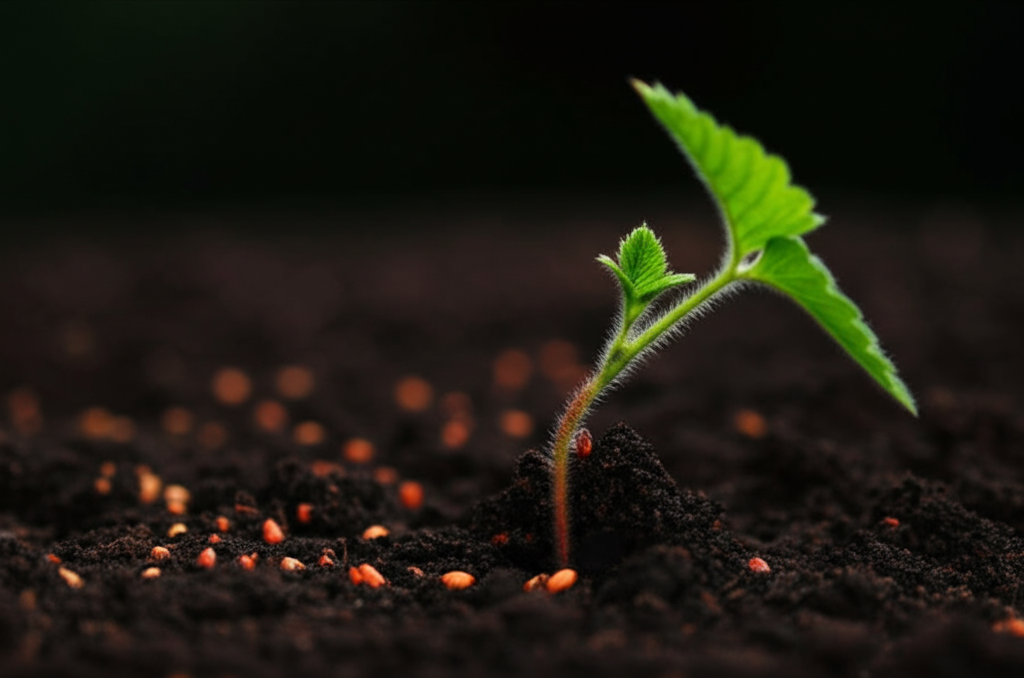
Every strawberry begins as a tiny seed, dormant and patient, waiting for the perfect conditions to awaken. In the cool embrace of early spring, these seeds stir to life, responding to the gentle warmth of the sun and the nourishment of rich soil.
The seed's journey is a testament to nature's resilience — a microscopic speck containing all the genetic information needed to create one of the world's most beloved fruits. Within each seed lies the blueprint for the entire plant: its root system, foliage, flowers, and eventually, the fruit itself.
The Awakening
When conditions are right — typically when soil temperatures reach about 65-70°F (18-21°C) — the seed absorbs water, causing its coat to swell and eventually split. This process, known as imbibition, activates enzymes within the seed, beginning the remarkable transformation from dormant particle to living plant.
"From the smallest beginnings come the greatest wonders of nature."
Unlike many other fruits, the strawberry's seeds are external — visible on the surface of what we commonly call the fruit. Botanically speaking, each of these seeds is actually an achene, a type of dry fruit containing a single seed. What we recognize as the strawberry fruit is technically the enlarged receptacle of the flower — a unique characteristic that sets strawberries apart in the plant kingdom.
The journey from seed to seedling is perhaps the most vulnerable stage in the strawberry's life cycle. Many seeds never make it past this point, succumbing to unfavorable conditions, predation, or competition. Those that do survive demonstrate the remarkable resilience encoded in their genetic makeup — a resilience that will serve them throughout their development.
The Growth Cycle: From Seedling to Flowering
Throughout this cycle, the strawberry plant demonstrates remarkable adaptability, responding to changes in light, temperature, and moisture. Each stage is a carefully orchestrated dance of cellular development, guided by millions of years of evolutionary wisdom.
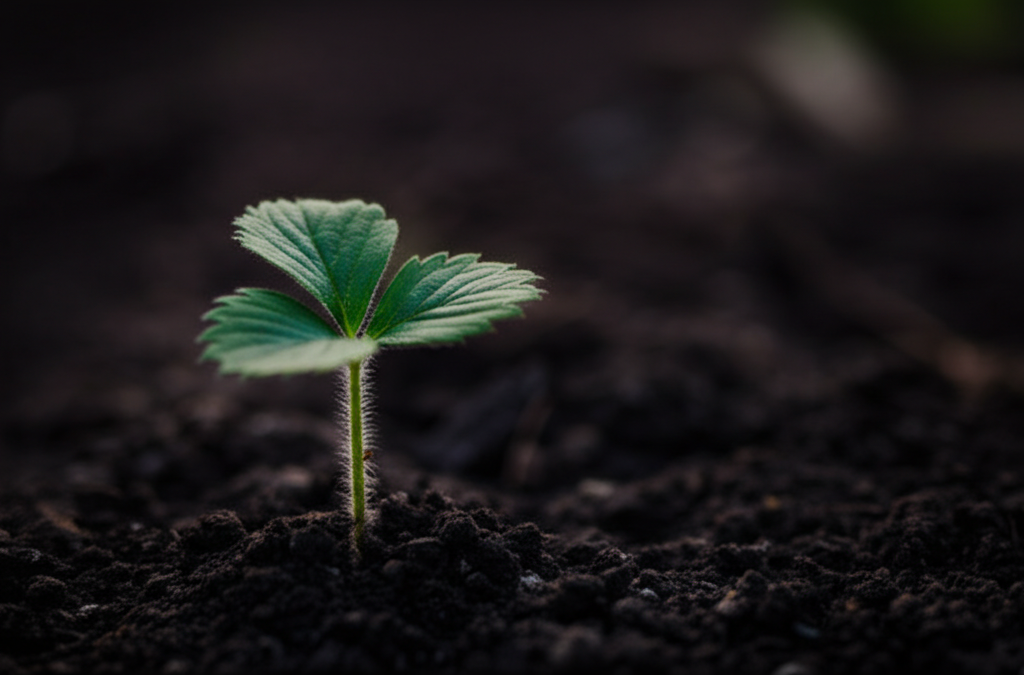
Germination
The seed coat splits, and a delicate root emerges, anchoring itself in the soil. Soon after, the first leaves unfurl, reaching toward the light. This initial growth establishes the foundation for the plant's future development.
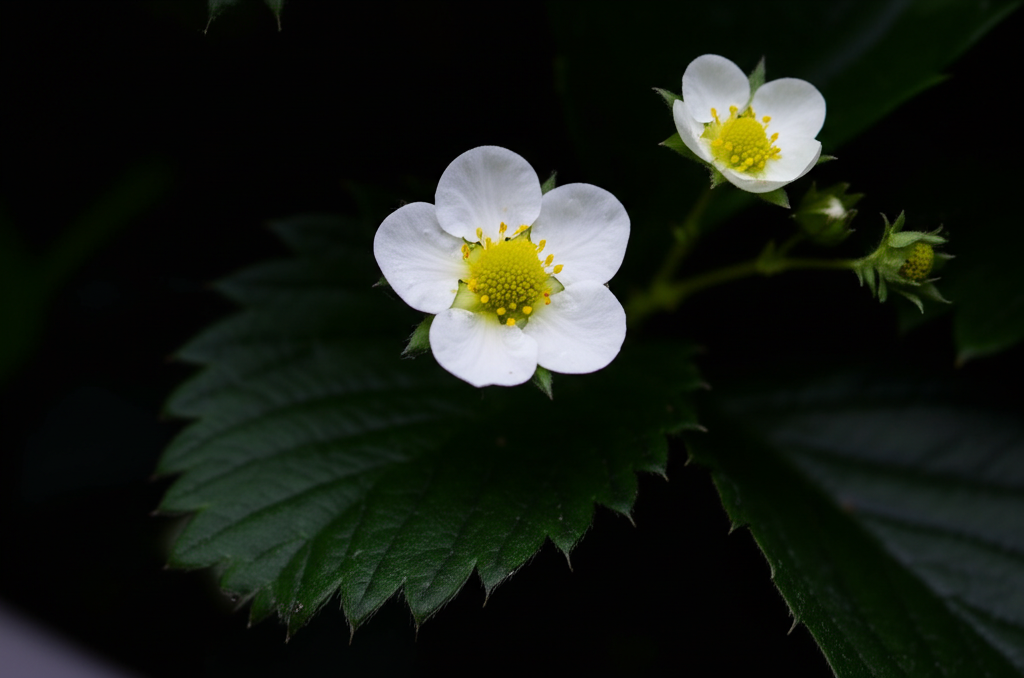
Flowering
As the plant matures, delicate white blossoms appear, each a promise of fruit to come. Bees and other pollinators play their crucial role in this stage, transferring pollen between flowers and initiating the process of fruit development.
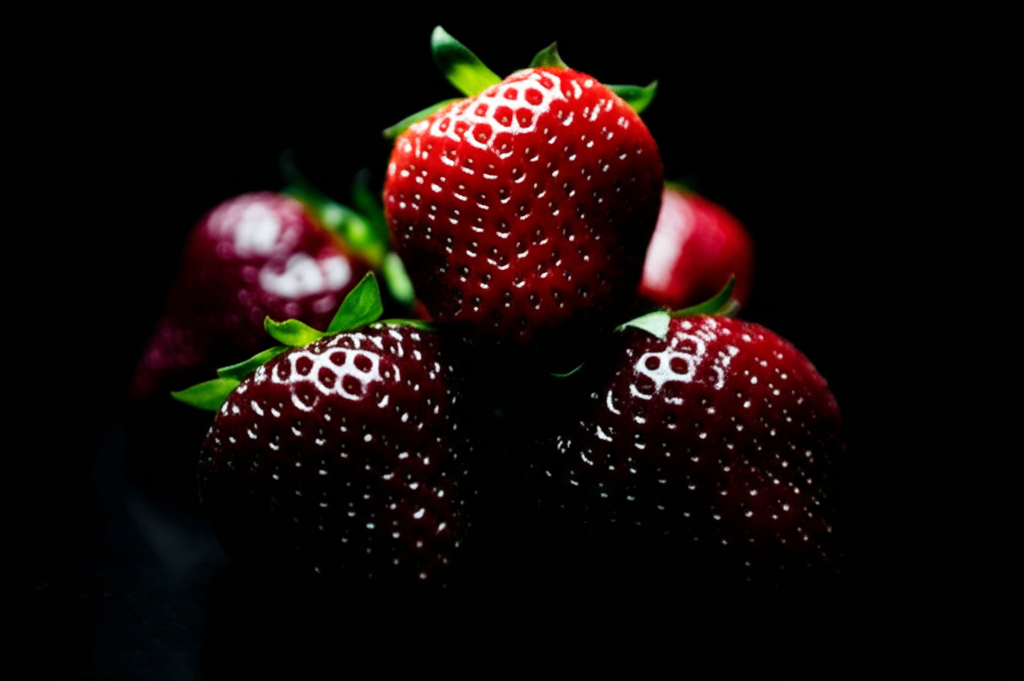
Fruit Formation
After pollination, the flower's receptacle swells, forming the flesh of the strawberry. The true fruits are actually the tiny seeds visible on the surface. As the receptacle grows, it gradually takes on its characteristic red color.
The Science of Growth
The strawberry plant's growth is regulated by a complex interplay of hormones, environmental cues, and genetic programming. Auxins, cytokinins, and gibberellins — plant hormones — coordinate the development of roots, stems, leaves, and eventually, flowers and fruits.
Photoperiod — the relative length of day and night — plays a crucial role in triggering flowering. Most strawberry varieties are sensitive to day length, with short-day varieties flowering when days become shorter than 14 hours, and long-day varieties requiring more than 12 hours of daylight to initiate flowering.
Temperature also influences growth and development. Strawberries generally thrive in temperatures between 60-80°F (15-27°C), though different varieties have adapted to various climate conditions. Too much heat can stress the plants, while frost can damage flowers and developing fruits.
The Harvest & Transformation: Ripening to Perfection
As summer approaches, the green fruit begins its transformation. Chlorophyll gives way to anthocyanins, painting the strawberry in its characteristic crimson hue. Sugars accumulate, acids balance, and aromatic compounds develop.
The moment of perfect ripeness is fleeting — a brief window when all elements are in ideal balance. This is the moment of harvest, when the strawberry reaches its full potential. The vibrant red color, sweet aroma, and perfect balance of sweetness and acidity signal that the fruit is ready to be picked.
The Chemistry of Flavor
The distinctive flavor of a ripe strawberry is a complex symphony of chemical compounds. Over 350 volatile compounds contribute to the fruit's aroma, with esters, furanones, and terpenes playing particularly important roles. The balance of sugars (primarily glucose, fructose, and sucrose) and organic acids (mainly citric and malic) creates the characteristic sweet-tart flavor that makes strawberries so beloved.
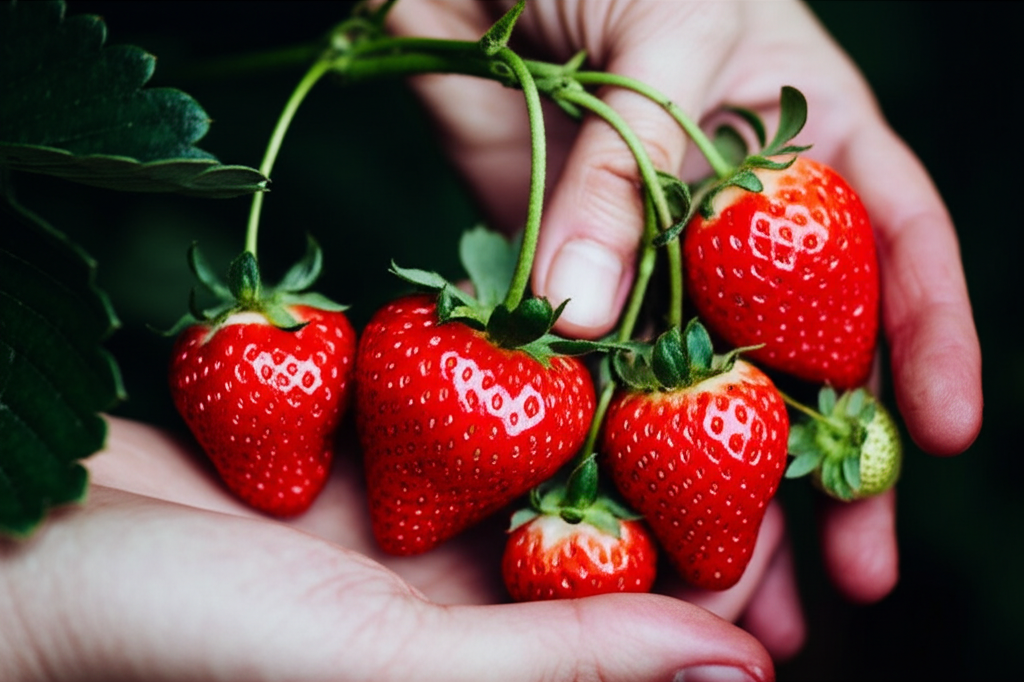
The Nutritional Profile
Beyond their delightful flavor, strawberries offer impressive nutritional benefits:
- Rich in vitamin C (more than oranges by weight)
- Good source of manganese and potassium
- High in antioxidants, particularly anthocyanins
- Contains ellagic acid, which has anti-cancer properties
- Low in calories (approximately 32 calories per 100g)
From field to table, the strawberry continues its journey, bringing joy and nourishment. Whether enjoyed fresh, preserved as jam, or transformed into culinary creations, it carries with it the story of its remarkable journey.
"The strawberry's journey from seed to fruit is a reminder of nature's patience and precision — a process that cannot be rushed, only respected and celebrated."
Beyond the Harvest
After harvest, the strawberry plant continues its cycle. In many varieties, the mother plant sends out runners — horizontal stems that develop new plants at their tips. These daughter plants are genetic clones of the mother, ensuring the continuation of desirable traits.
As autumn approaches and days grow shorter, the plant prepares for dormancy. Energy is redirected from fruit production to root development and the storage of nutrients that will sustain it through winter. When spring returns, the cycle begins anew — a testament to the enduring rhythm of nature.
Conclusion
The journey of the strawberry from seed to fruit is a remarkable testament to the complexity and beauty of natural processes. Each stage — from germination to harvest — represents a carefully orchestrated sequence of biological events, refined over millions of years of evolution.
In our fast-paced world, the strawberry reminds us of the value of patience and the rewards of natural development. Its journey teaches us that some processes cannot be rushed — that true quality emerges from the perfect alignment of time, conditions, and genetic potential.
The next time you enjoy a perfectly ripe strawberry, take a moment to appreciate the remarkable journey that brought it to your table — a journey that begins with a tiny seed and culminates in one of nature's most perfect creations.